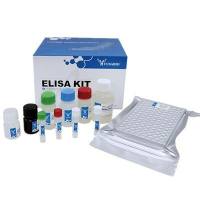Cloning strategies based on homology provide an attractive methodology for identifying novel members of a multigene family.
The techniques are straightforward, with well-established protocols, and high-quality reagents are readily available. Most
steps are relatively forgiving, and there is a short learning curve. The value of this should not be underestimated when comparing
it with expression-based strategies, such as oocyte injections or transient cell transfections, in which success depends on
meticulous replication of very exacting conditions. From a technical standpoint, homology-based approaches are the fastest
and simplest to initiate and master. Of course, implicit in this is the assumption that novel family members will share significant
homology to the known gene, which may or may not be true. Also, because the level of homology may be modest, low-stringency
conditions are generally required, which results in a significant background of “false positives” in the assay. Indeed, a
major challenge in the development of a homology-based approach lies in devising strategies that seek to maximize the efficiency
of the process. In the course of our efforts we utilized four independent strategies, all of which led to the identification
of novel genes. Each approach brought with it a set of advantages and disadvantages. Notably, no single strategy would have
been sufficient to isolate all receptors.






